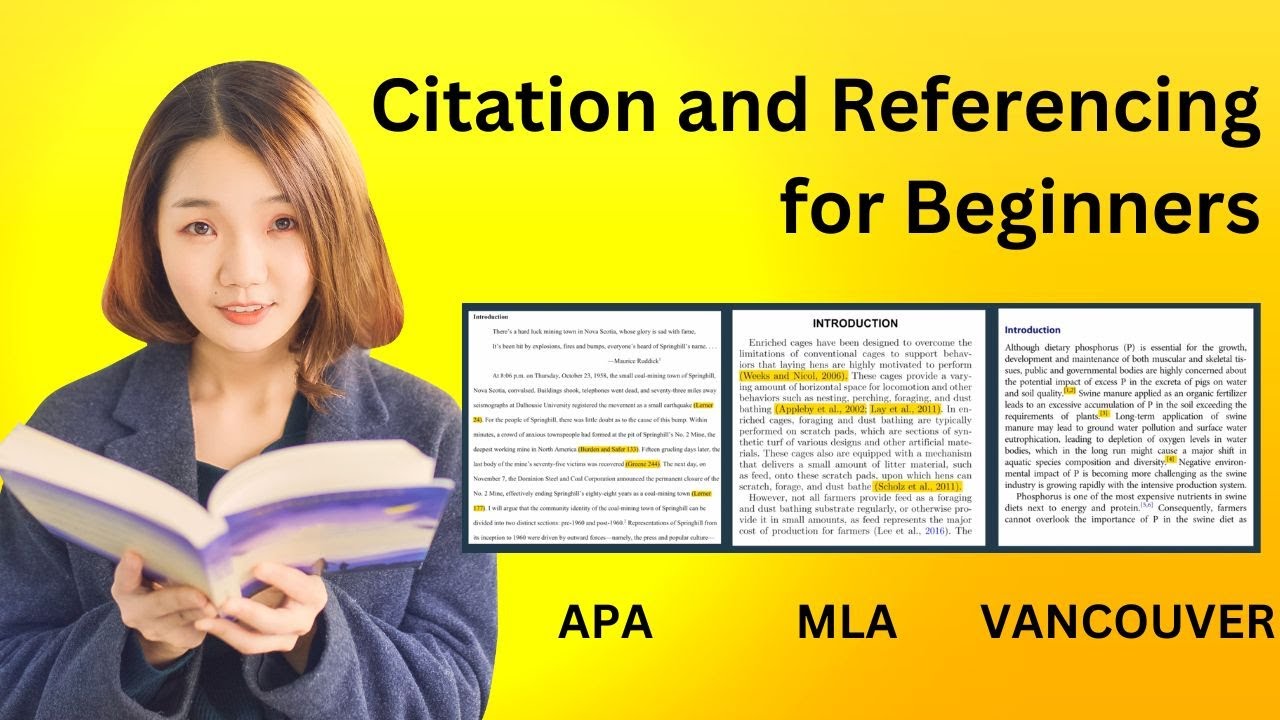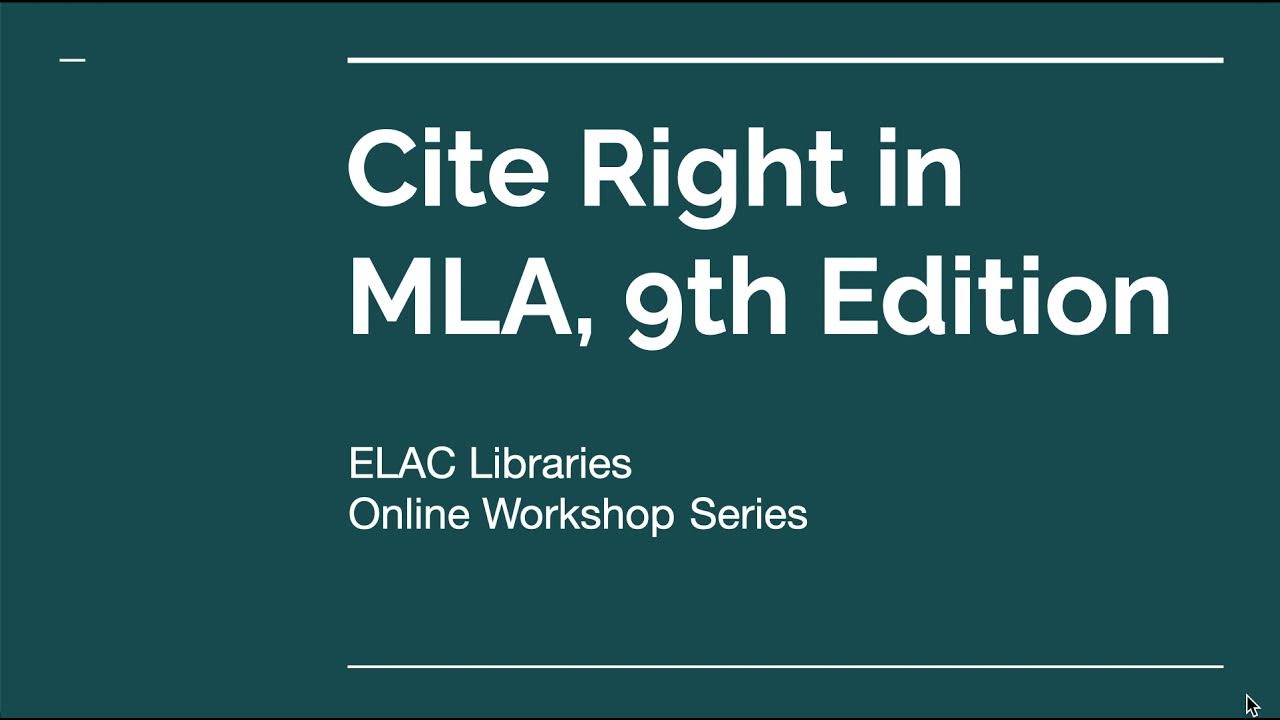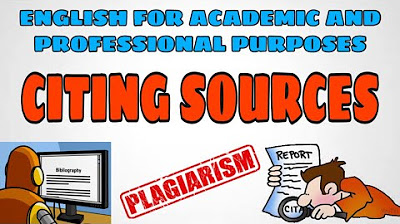Different Style Guides and Citation Formats (MLA, APA) - Overview & Purpose
Summary
TLDRThis script discusses the importance of style guides like MLA and APA in academic writing, emphasizing their role in preventing plagiarism, enhancing credibility, and aiding future research. It explains the differences between MLA and APA formats, particularly in bibliographic and internal citations, tailored to the needs of different academic fields. The script also cautions against over-reliance on citation generators like EasyBib, advocating for careful verification of citation details to ensure accuracy.
Takeaways
- 📚 A style guide is a set of rules outlining how your writing should be formatted, including citation and bibliographic information.
- ✍️ MLA (Modern Language Association) is a common citation style in English courses, while APA is often used in social, medical, and physical sciences.
- 🔍 Citations give credit where it's due, helping avoid plagiarism and enhancing the credibility of your research.
- 📝 Proper citations also demonstrate the quality of your research and provide a way for others to verify your sources.
- 🔗 Citations serve as breadcrumbs for others researching similar topics, allowing them to track down original sources easily.
- 🎓 MLA citations focus on the page number of a source, while APA citations emphasize the publication date, reflecting the needs of different academic fields.
- 👩🏫 Teachers and professors often require specific citation styles that make the most sense for their subject matter.
- ⚠️ Online citation tools like EasyBib can help format citations correctly, but the user must verify the accuracy of the information entered.
- 🖥️ EasyBib is good at punctuating citations but often pulls incorrect information, especially from websites, so manual checks are necessary.
- ✅ Double-checking citations for accurate information and punctuation is crucial for ensuring correctness in academic work.
Q & A
What is a style guide and why is it important in writing?
-A style guide is a set of rules that outlines how writing should be formatted, including how to format resources and cite sources. It ensures consistency, credibility, and gives proper credit to original sources.
Why do we need to cite sources in research writing?
-Citing sources is important for three main reasons: to give credit to original authors, to enhance the writer's credibility, and to provide breadcrumbs for others to follow when conducting similar research.
What is plagiarism, and how do citations help prevent it?
-Plagiarism is passing off someone else's ideas as your own. Citations make it clear where the information comes from, preventing plagiarism by giving credit to the original sources.
How do citations enhance the credibility of a research paper?
-Using citations from quality sources shows that the writer has done thorough research and backs up their arguments with expert knowledge, making the writer appear more informed and credible.
What is the benefit of citations for other researchers?
-Citations serve as a way for other researchers to find additional information on similar topics. They act as a trail that others can follow to locate relevant sources and expand on their own research.
What are the two main citation styles used in college, and what subjects typically use them?
-The two main citation styles are MLA (Modern Language Association) and APA (American Psychological Association). MLA is used mostly in English courses, while APA is commonly used in social, medical, and physical sciences.
What is the difference between MLA and APA internal citations?
-In MLA style, internal citations include the author’s last name and page number, which is useful for longer texts like novels. APA style, used more in shorter academic articles, includes the author’s last name and the date of publication, emphasizing how current the information is.
Why do different subjects require different citation styles?
-Different subjects have different priorities. For example, in English, knowing where in the text something is found (page number) is important. In sciences, the date of research is often more crucial, so APA emphasizes the publication date.
What are some limitations of online citation tools like EasyBib?
-Online citation tools like EasyBib can properly format citations but often rely on crowd-sourced data, leading to errors in bibliographic information. Users need to double-check the information fields to ensure accuracy.
What are some common mistakes students make when using citation tools?
-Common mistakes include trusting the tool to pull all correct information, not checking for missing or incorrect fields like author names or dates, and failing to correct any capitalization or formatting errors.
Outlines

Esta sección está disponible solo para usuarios con suscripción. Por favor, mejora tu plan para acceder a esta parte.
Mejorar ahoraMindmap

Esta sección está disponible solo para usuarios con suscripción. Por favor, mejora tu plan para acceder a esta parte.
Mejorar ahoraKeywords

Esta sección está disponible solo para usuarios con suscripción. Por favor, mejora tu plan para acceder a esta parte.
Mejorar ahoraHighlights

Esta sección está disponible solo para usuarios con suscripción. Por favor, mejora tu plan para acceder a esta parte.
Mejorar ahoraTranscripts

Esta sección está disponible solo para usuarios con suscripción. Por favor, mejora tu plan para acceder a esta parte.
Mejorar ahoraVer Más Videos Relacionados

Writing Bibliography || GRADE 8 || MELC-based VIDEO LESSON | QUARTER 1 | MODULE 2

Introduction to Citation Styles: APA 7th ed.

Citation and Referencing for Beginners Part II

AP Seminar Performace Task 2: Citations, Writing Style and Peer Review

Cite Right in MLA (9th Edition) Workshop

CITING SOURCES | English for Academic and Professional Purposes
5.0 / 5 (0 votes)
